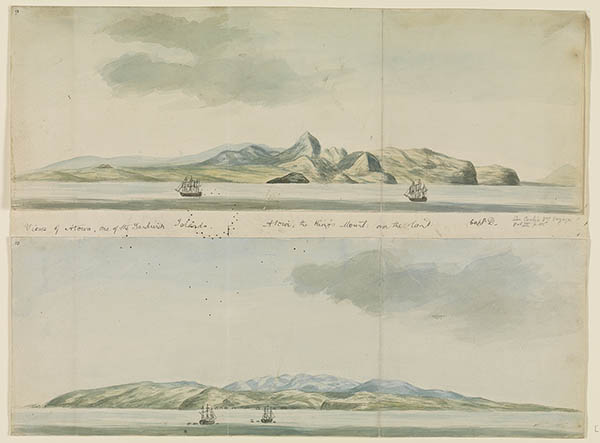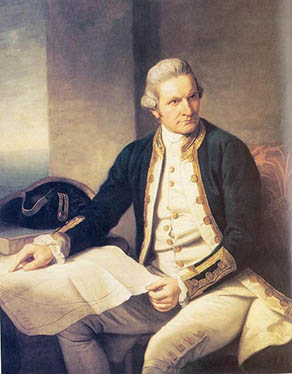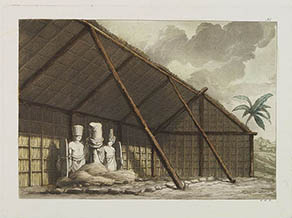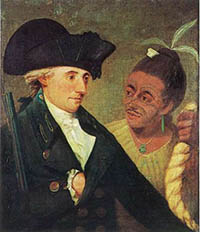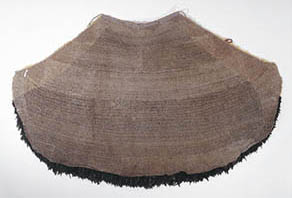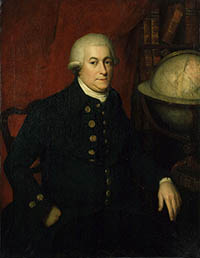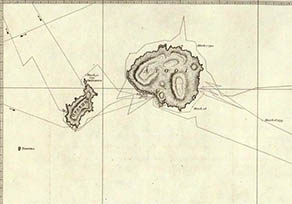 |
 |
 |
 |
||||||
|
|
|
|
|
|
|
|
|
|
 |
 |
 |
|
|
 |
 |
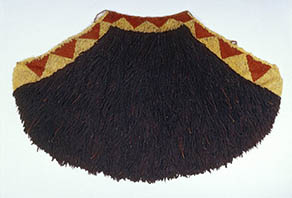
|
 |
|
 |
|
 |
|
 |
“Captain George Vancouver came to Kaua‘i in 1792, fourteen years after Cook’s discovery. He had previously been a midshipman on either Cook’s or Clerke’s ship. And Waimea was one of those places early on that was fairly often visited because people knew they could get water and provisions. The Hawaiians were generally considered friendly. Later on, because of the civil war between Kamehameha and the various chiefs of Maui and O‘ahu, Kamehameha figured out pretty quickly that if you were good to the haoles, they came back. You could trade and you could get guns. One of the reasons he was successful is that he was one of those who figured out early that by being a good host, he could get guns, and that gave him an advantage in the wars. The other chiefs figured that out too, but it took them maybe a little bit longer. “And also the water: Kaua‘i offered good water and taro and yams. In fact some of the traders went to Ni‘ihau because Ni‘ihau had a reputation for having really good yams, and yams were better than sweet potatoes because they lasted longer. Sweet potatoes tended to rot and yams would hang in there for a while. "There were reports of really huge yams, although after a few years the yam crops in Ni‘ihau seemed to have pretty much dried up and there weren’t any. So visitors stopped going to Ni‘ihau after about the 1790’s, and as far as I know there was almost no more contact there." “One of the early explorers, probably Vancouver, landed and went ashore on Kaua‘i and walked from where Waimea town is now down towards Kekaha. He may have gotten as far as Kekaha, maybe not that far. But he saw that there were houses all along that area. He was impressed with the Hawaiian hospitality. Everywhere that he went they offered him food and drink, and sometimes their women. "He saw one woman who was carrying a baby dog and was suckling it, and he saw that they were very close to their animals. The last time he visited Waimea, I think it was 1795, the Hawaiians put on a show for him. They had a big hula festival and there were hundreds of people, maybe even thousands, who gathered at Waimea." 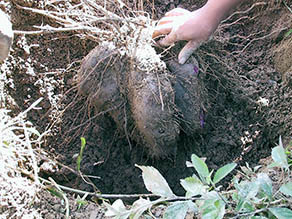
"Vancouver sails around the island but he does not stop at Hanalei or anywhere on the North side of the island. He hangs out outside of Wailua for a short period of time and makes contact with Hawaiians there, but he doesn’t come ashore. It’s too dangerous to come ashore anywhere except the south side of Kaua‘i because the trade winds are going to push your ship right onto the shore. "As far as I know, none of the explorers landed anywhere except from Kōloa on to Waimea. The only one that I can remember for sure who goes around the island is Vancouver. I believe his artist draws some pictures of the coast line up there, but they don’t anchor and stop, and hang out and meet the Hawaiians and so contact is just not happening up there."
|
 |
||
 |
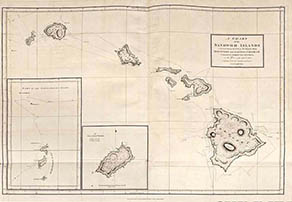 |
 |
|
 |
|
 |
|
 |
The impact of these visits will be discussed in the Society page. A side story, related to a very different early visitor, is the construction of Russian forts on Kaua‘i. The next major group of visitors to arrive is the missionaries.
|
 |
||
 |
|
 |
||

|
|
||||
| Copyright 2018 Pacific Worlds & Associates • Usage Policy • Webmaster |
||||
